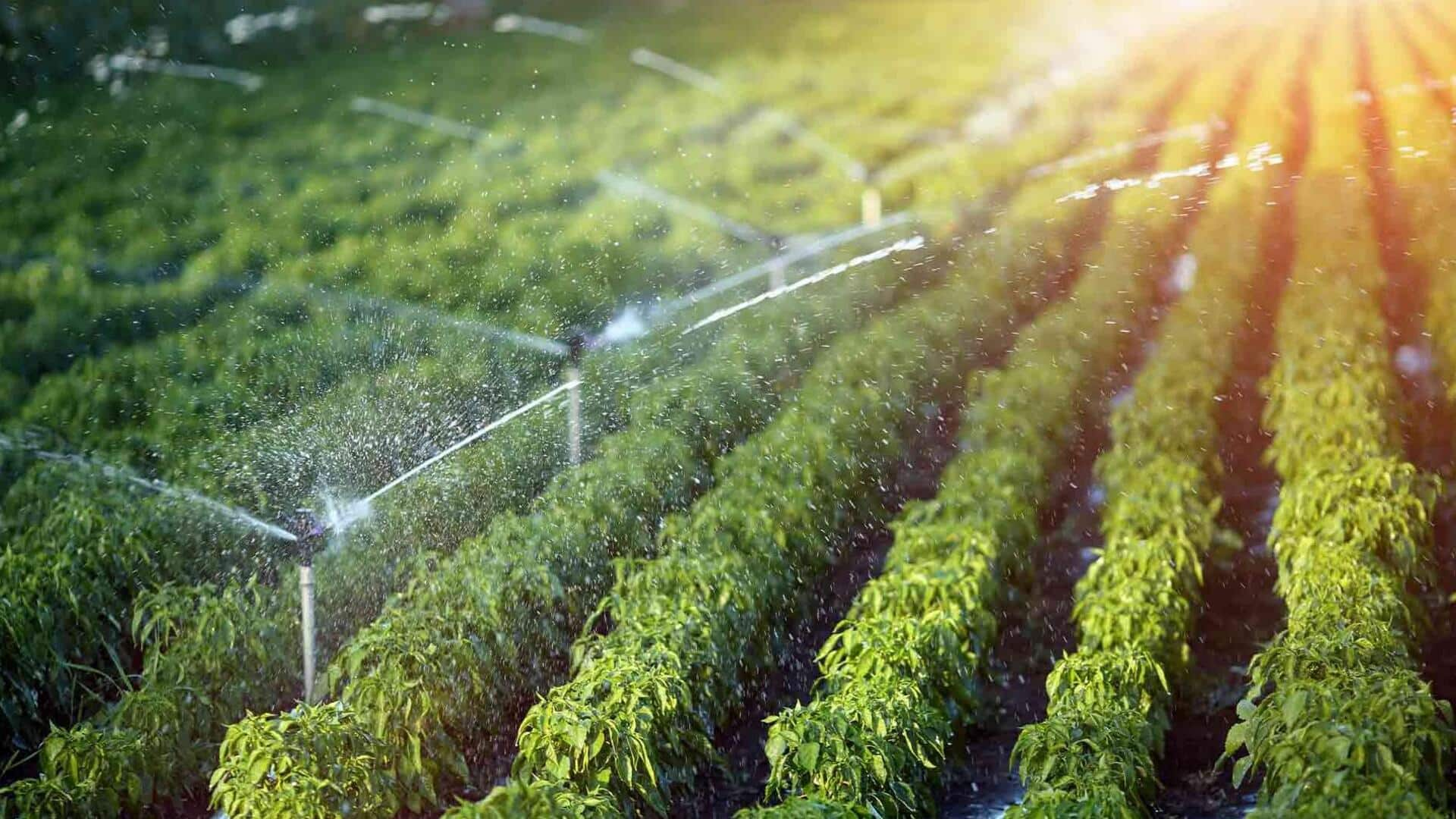
Mastering drip irrigation: Water your garden the smart way
What's the story
Drip irrigation is the smartest way to water your garden, it makes every drop count!
This system brings water straight to the roots of your plants, minimizing evaporation and saving up to 50% more water compared to traditional methods.
While setting up a drip irrigation system may initially seem intimidating, with the right knowledge and tools, you can install one like a pro.
Basics
Understanding the basics of drip irrigation
Before you start installing, it's important to grasp the concept behind drip irrigation.
This system relies on a network of tubes and emitters (think of them as mini sprinklers) that deliver water slowly and directly to the base of each plant.
It's all about efficiency - no water is wasted, and your plants get the perfect amount of water they need to grow strong and healthy.
Planning
Planning your drip irrigation layout
Proper planning is crucial for the success of a drip irrigation system.
Begin by drawing a map of your garden, indicating where different types of plants are located.
Take into account the amount of sun each area gets when planning where to place emitters.
Different plants need different amounts of water, so grouping similar ones together helps you water more efficiently.
Components
Selecting the right components
Selecting high-quality components that are specifically chosen for your garden's unique requirements is crucial for a successful drip irrigation system.
Key parts include mainline tubing (typically one-half inch in diameter), emitters or drippers (they discharge water at predetermined rates), connectors (for linking tubing sections), and stakes (for holding tubing in position).
For sloping landscapes or lengthy tube runs, choose pressure-compensating emitters to guarantee even watering.
Installation
Installation tips and tricks
Setting up your drip irrigation system is a breeze with these steps.
Start by placing your mainline tubing along your desired path without attaching it yet. This gives you the freedom to adjust as necessary.
Cut the tubing with scissors or a tubing cutter for clean, accurate fits.
Next, attach emitters at specific points near each plant using connectors, or by directly inserting them into the mainline tubing.
Maintenance
Maintenance for longevity
A well-maintained drip irrigation system ensures continued efficiency.
Regularly inspect for leaks or clogged emitters; a simple cleaning can restore flow without the need for new parts.
In freezing climates, winterize your system by fully draining it to prevent freeze damage.
Keep an eye on plant growth; as your plants thrive, you may need to adjust emitter placement or flow rates.